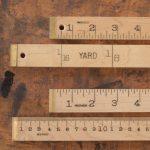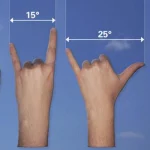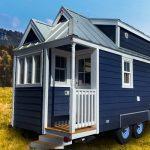Gravel Size Chart and Different Types Explained with Pictures
The standard gravel size can vary depending on its intended use and regional standards. Gravel is generally categorized into different sizes based on the diameter of the individual stones. Commonly used sizes for gravel include:
- Pea Gravel: Typically 1/4 inch to 1/2 inch (about 0.6 cm to 1.3 cm) in diameter. It is often used for landscaping and pathways.
- Crushed Stone #5: Ranging from 1 inch to 1.5 inches (about 2.5 cm to 3.8 cm) in diameter. It’s commonly used as a base material for driveways and roads.
- Crushed Stone #57: Usually 3/4 inch to 1 inch (about 1.9 cm to 2.5 cm) in diameter. This size is commonly used for concrete mixes, drainage, and landscaping.
- Crushed Stone #411: Usually 1/2 inch (about 1.3 cm) in diameter. It’s commonly used for driveways, drainage, and concrete mixtures.
- River Gravel: Varied sizes, typically rounded and smooth due to natural erosion. River gravel is often used in landscaping and decorative applications.
Keep in mind that these sizes can vary based on local standards and preferences, so my advice is always best to check with local suppliers or construction guidelines for the most accurate information in your area.
Gravel is a collection of loose, grey rock fragments that are naturally occurring or manufactured. You’ve probably seen these small dusty rocks in landscaping or road construction. Gravel doesn’t come in uniform sizes, and you’ll need thorough research before buying a ton of it for your project (skip straight to the Gravel Size Chart).
If you get the gravel size right, there isn’t a limit to your applications. Gravel is useful for landscape decoration, soil erosion management, construction, and drainage. Learn what size of gravel you need from our gravel size chart below!
Jump right into the Frequently Asked Questions
Related: Rebar Sizes Chart and Different Types, Wrench Size Chart and Different Types converted in mm, sae, …, Tractor size , Pool sizes for your garden
Table of Content of Gravel Sizing
- What is the difference between Crushed stones and gravel?
- Gravel Size Chart
- Most common types of gravel compared
- How to Choose the Right Gravel Size
- What are the Types of Gravel?
- Frequently Asked Questions
Crushed stone vs gravel explained
What is Crushed Stone?
Crushed stone is a product of crushing rocks, making it angular in shape and texture. These stones are produced with the help of machines by mining and crushing natural rock. It is one of the most popular materials used in construction and landscaping projects due to its versatility. Crushed stone is commonly used as a base material for roads, driveways, and foundations and as a drainage option.
What is Gravel?
Gravel is a natural, rounded, and smooth-surfaced material formed from riverbeds or ancient deposits. It is available in various colors and sizes, making it suitable for functional and decorative purposes. Gravel is often used for pathways, landscaping, and as an aggregate in concrete.

Gravel has a rounded shape and corners due to natural weathering and erosion. Whereas crushed stone usually has a boxy shape with more angular surfaces.
source: Naturallist
Type of Stone
Many types of rock can be gravel! Some common types of rock for gravel include:
- Limestone
- Sandstone
- Basalt
- Granite
Gravel Size Chart
Related: Drill Bit Size Chart and Different Types in metric, gauge size and more…, Size Chart for Bolts and Different Types
Gravel and crushed stone size chart
| Gravel number | Size in inches | Size in mm |
| #1 | 2 – 4 inches | 50.0 -102 mm |
| #2 | 0.5 – 2.5 inches | 13.0 – 63.5 mm |
| #3 | 0.5 – 2.0 inches | 13.0 – 50.0 mm |
| #4 | 1.0 – 2.5 inches | 25.0 – 63.5 mm |
| #5: | 1.0 inch | 25.0 mm |
| #8: | 0.4 – 0.5 inches | 10.0 – 13.0 mm |
| #10 | 0.1 inches | 3.0 mm |
| #57 | 0.8 inches | 20.0 mm |
| #67 | less than 0.8 inches | Less than 20.0 mm |
Most common used gravel compared in a table
Find below the Comparison Table of the most popular gravel types and sizes, how they look and what they are used for. Some types of gravel come in a variety of sizes and a variety of colors.
| Type of Gravel | Characteristics | Best Uses | Edging Required? |
|---|---|---|---|
| Pea Gravel | Small, rounded stones in natural colors | Walkways, driveways’ top layer | Yes |
| River Rock | Smooth and rounded gravel in natural shades | Landscaping, top layer of driveways | Yes |
| Lava Rock | Porous structure, comes in red, black, or gray | Weed control, mulch, and aesthetic landscaping | No |
| Marble Chips | Chipped marble in white and gray | Walkways, driveways’ top layer | Yes |
| Jersey Shore Gravel | Small, smooth gravel in golden color | Driveways, walks, landscaping in specific regions | Yes |
Note: Edging is recommended to prevent displacement of smooth gravel types like pea gravel, river rock, and marble chips.

How to Choose the Right Gravel Size
Related: Pallet Dimensions and Types by industries in inches & centimeters, Plant Size – Complete Guide From house plants to trees
Gravel sizes are based on the diameter in inches of the stones. Its size often determines its use and what it is called – pea gravel, river gravel, washed gravel, and river rock of various sizes. However, the correct size of gravel you need will depend on the application. This section will discuss the best use for the various stone grades.
#1 Gravel
This gravel size is the largest, featuring stones with a diameter of 2-4 inches (50 – 102 mm). Since they are large, it’ll be hard to shovel them, and you’ll have to place them one at a time. The common applications for this gravel grade include:
- Making ballast
- Filling larger holes
- Reducing soil erosion
- Lining ditches
- As a decorative stone collection for gardens, patios, and yards
You can also use these rocks as the foundation for roads, driveways, and walkways but you’ll have to topdress them with stone dust. They can be unstable to walk on because of their size and require finer gravel for added stability.
#2 Gravel
This gravel size is rare, and you won’t easily find it on the market. The rocks have a diameter of 1.5 – 2.5 inches (13 – 63.5 cm). Here are the common ways these crushed rocks are used:
- Making ballast
- Filling holes
- Landscaping, and decoration
- Septic tank filtration
#3 Gravel
Perhaps the most popular gravel size for home projects, #3 gravel has a diameter of 0.5 – 2 inches (13 – 50 mm). You can use them for:
- Residential drainage projects
- Making ballast
- As a road base
- On driveways
- Filling dry wells
- As a base in septic filtration systems
Using them in your driveway should also include stone screenings to ensure the ground is stable enough for movement.
#4 Gravel
This gravel is about the size of a golf ball or an egg. It measures 1 – 2.5 inches (25 – 63.5 mm) in diameter and usually comes from crushed concrete. It can be a decoration or base for walkways when topdressed with fine gravel.
#5 Gravel
You need this if you are looking for the ideal particle size range to fill crevices and the spaces between larger stones. The gravel measures about an inch in diameter and is ideal for driveways, walkways, and roads.
#8 Gravel or Coarse sand
These crushed stones measure between 0.4 and 0.5 inches (10 – 13 mm). Mostly, these stones go through cleaning to eliminate dust and residue, giving them a smoother appearance. Some common applications include:
- Making asphalt
- Creating concrete mixes during construction
- As a subbase in patios, walkways, and driveways
- As decoration around vegetation
- As a base in horse barns
- To assist in drainage
#10 Gravel
Also known as stone dust, gravel screenings, or rock screenings, #10 gravel is a by-product of the stone-breaking process. They are compact and easy to apply, making them suitable for the following:
- As a paving base in stones, bricks, and concrete
- Making concrete slabs and blocks
- Filling spaces between larger rocks for stability
- Top-dressing driveways and sidewalks
Screenings can quickly get dirty, so you shouldn’t use them in muddy places.
#57 Gravel
This middle-range gravel size is easy to find and suitable for different functions. It measures about 0.75 inches (20 mm) and is ideal for any of the following uses:
- Making hot-mix asphalt
- RV parking pads
- Driveways and parking lots
- Landscaping purposes
- Topdressing on a sub base
- Making railroad ballast
- Helping drainage
- Lining underground paths for pipes and cables
My Pro tip: Use Jagged edge gravel for Driveways: Gravel with jagged edges may provide better interlocking and stability when used as a base material for driveways or pathways, as the irregular shapes can help create a firmer surface.
#67 Gravel
This gravel size is smaller than 0.75 inches (20 mm) and is among the smallest options. You can use it for:
- Making concrete blocks and slabs
- As a base on roads
- Improving drainage around water systems
- Stabilizing larger rocks
- Retaining walls

What are the Types of Gravel?
Related: Pool size chart – what are the standard pool sizes by shape, Storage Unit Size Chart – Guide To Comparing Spaces, Greenhouse Size and dimensions (the perfect size for your needs)
Gravel comes in different forms. Let’s look at the various types of gravel you can buy.
1. Bank Gravel
You can find this type of gravel naturally occurring in rivers and streams. It could be mixed up with the sand or natural soils on the river bank. Bank gravel is usually smooth and round and has an aesthetic look.
2. Bench Gravel
You’ll find bench gravel near valleys where streams flow by. It’ll indicate that the water levels are reducing, allowing the gravel to be visible instead of inside the stream.
3. Crushed Stone
Unlike natural gravel, crushed stone is a by-product of the quarry process and is mostly used to surface roads and driveways. Crushed stone isn’t smooth; instead, it’s edgy and coarse.
4. Fine Gravel
This is gravel with a very small diameter. It’s often used to stabilize the spaces between huge stones and road bases.
Pro tip: A common fine gravel type for French drains is “drainage gravel” or “drain rock.” The recommended size for drainage gravel in a French drain system is usually between 1/4 inch to 3/4 inch (about 0.6 cm to 1.9 cm) in diameter.
5. Stone Dust
As crushed stone goes through screens, the smallest are mixed with fine dust particles.
6. Pay Gravel
This gravel type comes with a lot of precious metals like gold. Miners can extract the gold using a method called gold panning.
7. Pea Gravel
Pea gravel gets its name from its size and appearance. The gravel looks clean and about the size of a pea.
Gravel and crushed stone sizing systems explained
ISO 14668 Gravel Size Categories:
ISO 14668 is an international standard that provides guidelines for classifying sedimentary materials, including gravel. The standard defines various size categories based on particle diameters. The gravel size categories in the ISO 14668 system are as follows:
- Very Coarse Gravel (GC): D50 > 200 mm – The median particle diameter (D50) is greater than 200 millimeters.
- Coarse Gravel (GC): D50 = 63 mm to 200 mm – The median particle diameter (D50) ranges from 63 millimeters to 200 millimeters.
- Medium Gravel (GM): D50 = 20 mm to 63 mm – The median particle diameter (D50) ranges from 20 millimeters to 63 millimeters.
- Fine Gravel (GF): D50 = 2 mm to 20 mm – The median particle diameter (D50) ranges from 2 to 20 millimeters.
- Very Fine Gravel (GVF): D50 < 2 mm – The median particle diameter (D50) is less than 2 millimeters.
Udden-Wentworth Scale Gravel Size Categories:
The Udden-Wentworth scale, also known as the Wentworth scale, is a widely used logarithmic scale for classifying sediment particle sizes, including gravel. It categorizes particles based on their diameters. The gravel size categories in the Udden-Wentworth scale system are as follows:
- Granule: 2 mm to 4 mm – Grains in this category fall between the sizes of sand and pebbles.
- Pebble: 4 mm to 64 mm – Pebbles are larger than granules but smaller than cobbles.
- Cobble: 64 mm to 256 mm – Cobbles are larger than pebbles but smaller than boulders.
- Boulder: Greater than 256 mm – Boulders are the largest category, with particles having diameters greater than 256 millimeters.
Learn more about Gravel Size Types and Sizes (video)
Frequently Asked Questions
1. What size is #1 gravel?
#1 gravel has a diameter of 2 – 4 inches (50 – 100 mm).
2. What size gravel is best?
The answer depends on your situation. Selecting the appropriate size of crushed stone and gravel is crucial to the success of any construction or landscaping project. The size determines the stone’s load-bearing capabilities, drainage properties, and aesthetics. The application you want will determine the right size of gravel to use.
3. What size is #4 gravel?
#4 gravel measures about 1 – 2.5 inches in diameter (25 – 63.5 mm).
4. What size of gravel is best for a driveway?
#3 Gravel is the best size for driveways since it provides a stable platform and proper drainage thanks to its medium-sized diameter.
5. What is 10mm gravel used for?
10mm gravel or #8 gravel is great for decorative purposes in your landscape. It adds interest, paves walkways, and suppresses weed growth.
6. What area will 1 ton of gravel cover?
It depends on the gravel size. A ton of 0.3 – 0.5 inch gravel will approximately cover about 100 sq. ft at a depth of 2 inches.
Conclusion
Gravel can be natural or artificial and comprises small rocks with various functions. These rocks come in different sizes, and you’ll need to determine the type of application before choosing gravel. Once you know the gravel size you want for your project, you can buy as much of it without fear.
Comment any questions about this topic below, and we’ll help you with any rocky situation!
Picture in this post is by Jon Moore on Unsplash
Related to Gravel Size Chart
- Barbie Doll Size : What are different sizes of Barbie ?
- Blanket sizes chart : blanket sizes and dimensions in inches & cm
- Tablecloth size chart – What are standard tablecloth sizes ?
- How Many Meters Are In A Yard?
- How Many Centimeters are 8 Inches?
- Knife Sizes and Different Types
- 4 Inches is How Many Centimeters?
- Light Bulb Base Sizes : What size light bulb base do I need?
- Tesalate Towel Size Guide
- Light bulb Size : What are the different and standard bulb sizes?
- Duvet Sizes: What is a Standard-Size Duvet?
- Single Car Garage Size and Dimensions
- How High Is A Story?
- How Much Does 1 Cup Of Rice Weigh?
- Cast Iron Skillet Sizes: What Size Do I Need?
- Dollar Bills Size Chart
- Pizza Sizes: Which One to Order?
- How To Measure A Foot Without A Ruler
- Wine Glass Size Chart
- Tiny Houses Size Charts






















What size gravel is best for a walkway that is easy under the feet for older people? Is pea gravel a good option? I heard it doesn’t pack so it isnt stable for walking on. Is this true?
Hello Stacy, Pea gravel can be an excellent choice for an elderly-friendly walkway, offering a comfortable and safe surface while maintaining an attractive and natural appearance. With proper installation and care, a pea gravel walkway can provide years of enjoyment for people of all ages, including older individuals. We’re not garden experts, but my advice is it’s essential to consider some factors before choosing pea gravel:
Firm Base: Ensure that the walkway’s base is well-prepared and compacted to provide a stable foundation for the pea gravel.
Depth: The depth of the pea gravel layer should be sufficient to prevent stones from shifting while still maintaining a comfortable walking surface.
Edging: Consider using edging material to contain the pea gravel within the walkway, preventing it from spreading onto surrounding areas.
Accessibility: Ensure the walkway is wide enough and has gentle slopes to accommodate walkers or mobility aids comfortably.